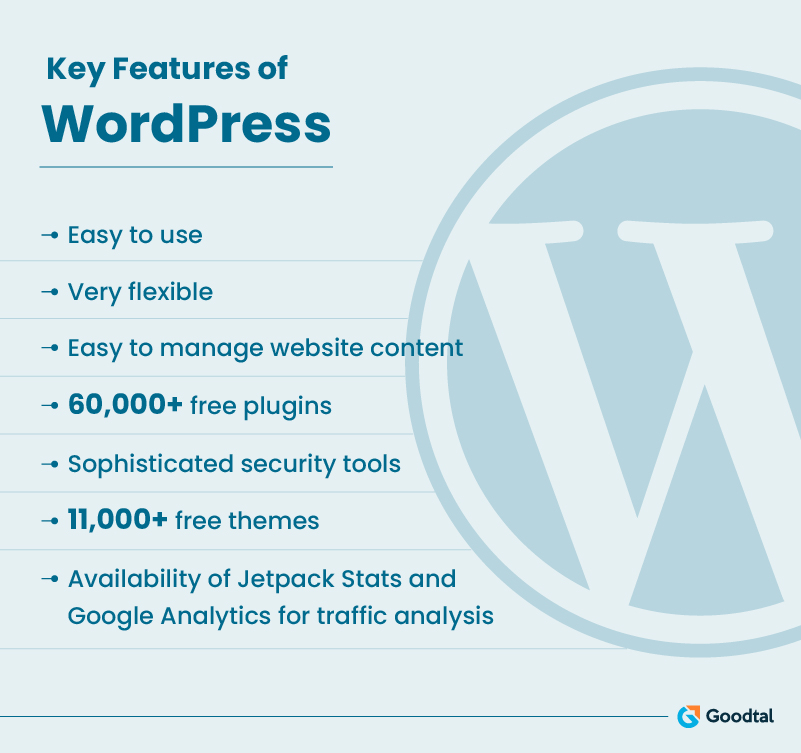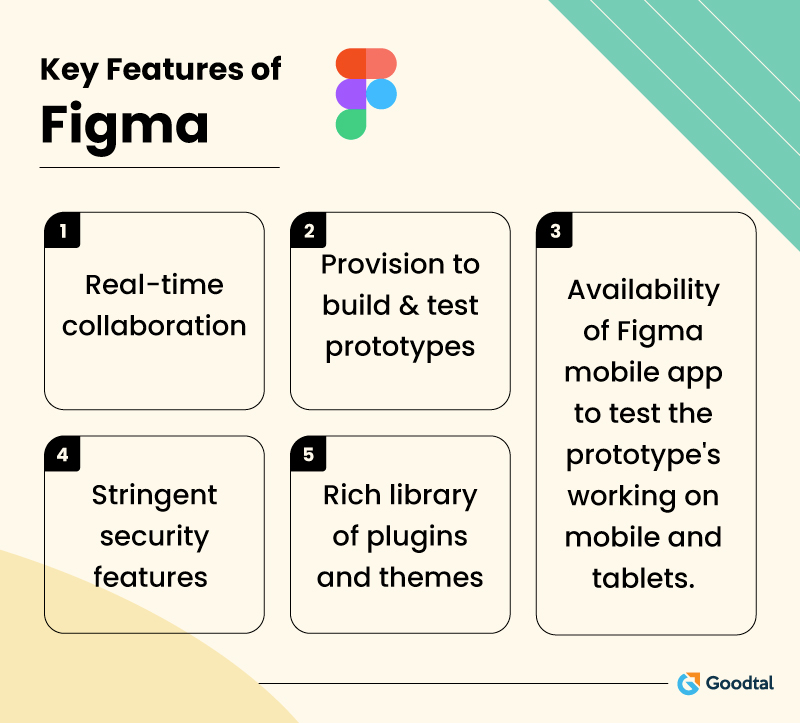
There are millions of websites on the internet fueling knowledge and making services more accessible to the Internet population. The stark competition in the world of websites has made the task of web designers to design a unique, beautiful, and robust website while prioritizing user accessibility challenging.
In this post, we will discuss some of the prominent tools top web designers use to create excellent websites with the best UI/UX in minimal time. We will talk about Adobe InDesign, WordPress, and Figma, some of the leading and highly efficient web design tools web designers use worldwide.
Web designers efficiently leverage these tools for creating web designs thanks to their easy-to-use interface and designer-friendly ecosystem. Let's move forward and learn more about these tools, but before that, let us briefly overview web design.
A Brief Overview of Web Design
Web design is one of the most crucial elements of any website. Web design is the user interface of a website responsible for the entire looks, feels, and usability. Any website's success highly depends on the quality of its web design. So, for your website to succeed, your web design must be productive, visually attractive, and easily accessible.
There are several metrics and elements that play a decisive role in building and determining the quality of a web design. Let's discuss these elements in more detail in the next section.
Suggested Reading: Web Design That Boosts Web Accessibility
Key Properties Every Web Design Must Have
The infographic below shows the key elements that play a decisive role in building the quality of a website.

There are certain qualities that a web design must have, be it for any website, ecommerce, business, blogging, or news. Let's talk about these qualities briefly.
- Responsivity
This is a property of a web design by which it performs the same on all devices. Responsive web design has a uniform appearance and functions over all devices, whether tablet, smartphone, or PC.
Meanwhile, non-responsive web designs act and appear differently on all devices, thus giving a non-uniform feeling and uncomfortable experience. Hence, responsivity is an essential feature of web design that web designers must prioritize as it is one of the key features impacting user experience.
- Navigation
This is another essential element of a web design that directs visitors to various website pages. Without proper navigation, it can be challenging for users to navigate and find helpful information on your website and, hence, can deteriorate user experience.
- Typography
Typography is another vital element of web design that carries much weight regarding user experience and website accessibility. Typography directly reflects in website readability and website accessibility. If a website has poor typography, it would be difficult for users to understand its content, affecting visitor retention rate.
- Virtual Content
Visual content includes images, videos, graphics, animation, and other objects that enhance customers' visual experience. Visual content is an integral part of the website responsible for its first impression. Your virtual content is accountable for your bounce rates, customer retention, and user accessibility and experience.
- Speed Optimization
Speed optimization is a crucial task that depends on several web design factors. It is one of the most essential tasks that need to be done by every web designer considering a priority.
Speed optimization depends on many web design elements, such as the number of pages, features, and virtual elements. The higher the number of features and visual elements, the slower the site will be. This is why website speed optimization is crucial for the best user experience.
Top Web Design Tools Used by Web Designers Around the World
Now, let’s take a look at some leading web design tools used by top web designers worldwide.
WordPress
WordPress is a very sophisticated and inclusive tool used by web developers and designers throughout the world for overall website development. Based on research, around 45.8% of websites worldwide are built on WordPress. Let’s take a look at some of the key features of WordPress.

Figma
Figma is another highly popular web design tool relatively newer than WordPress, released in 2016 and gaining traction rapidly. Let’s look at some features that have helped it achieve its vast user base.

Adobe InDesign
A product of Adobe Inc., the world's most innovative and leading software company, Adobe InDesign is top-rated amongst various types of designers, be it graphic designers, artists, or web designers. This platform might be older than WordPress, but it has recently become popular as a web design tool. Let’s discuss this tool in more detail in the next section.
What is Adobe InDesign?
Adobe InDesign is one of the most popular products of Adobe Inc. used by web designers, graphic designers, and other curators worldwide. It was released on 31st August 1999 and became a hit product soon after. It is an easy-to-use product that almost everyone can use, whether a professional or a student.
Adobe Indesign, a desktop publishing and designing software, is part of the Adobe Cloud that hosts many similar apps that can be used for creating creative designs and other such content. It is a very user-friendly software that can be used to create various things, from business cards and page layouts to flyers, posters, blogs, and much more.
Based on research, Adobe InDesign boasts a user base of 3 million users worldwide, along with an average monthly download of 242.9k. The projects designed on Adobe Indesign can be downloaded in PDF format or HTML to publish later.
In this post, our primary focus lies on Adobe InDesign and web design. We will get an overview of how web designers can leverage this tool to create robust, unique, and beautiful web designs.
Top Features/Uses of Adobe InDesign
Let's look at some of the key features of Adobe InDesign to understand its pros and functions in more detail.

Multiple Pages in One Document
You can add multiple pages to a document when working with Adobe InDesign. This property makes Adobe InDesign ideal for creating newspapers, magazine reports, brochures, etc.
Text Wrap
With the text wrap feature, you can wrap your text around anything, be it an image, any object you designed in InDesign, or any text frames. You can typically text wrap anything you want on Adobe InDesign. You get a range of options to choose from, such as wrap around the bounding box, wrap around the object shape, jump object, no text wrap, wrap text with intelligent subject detection, and much more.
Create Tables/Charts and Merge Data
InDesign allows you to create tables and charts in your documents effortlessly while also allowing you to merge data in them from spreadsheets or other places with data. Thus reducing the hassle of entering data manually.
Brings the Goodness of Adobe Creative Cloud
Adobe InDesign is a part of Adobe Creative Cloud, which consists of all the top Adobe products, such as Adobe Photoshop, Illustrator, and many others. You can create designs, share them on other products, and use their features to put more into your designs and make them unique and visually appealing.
Measure your Traffic and Engagement
Web designers can integrate Google Measurement ID when publishing documents to monitor traffic and engagement with your website efficiently.
How Can Web Designers Use Adobe InDesign for Web Designing?
Web designers these days have a lot of tools to choose from to create creative, unique, and robust web designs. One such tool is Adobe InDesign. Although InDesign was considered a tool ideal for creating print designs for newspapers, posters, and flyers, it is not limited to it.
Adobe InDesign is being used for designing wireframes, prototypes, typography, responsive designs, optimizing web designs, and many other things. You can create any web design using InDesign, export it to HTML, and publish it. You can design a new website effortlessly using Adobe InDesign by following simple steps.
Creating web designs using Adobe InDesign is pretty simple. It is as simple as using Mircosoft Paint to create black-and-white checkers, nostalgic, right? Remember how making checkers was a piece of cake on Paint? Similarly, creating unique and beautiful optimized web designs is easy on Adobe InDesign.
One of the most striking things about web designing using InDesign is that you can attach "style" to texts and other things like graphics, objects, and advanced properties like Anchored objects. Styling the elements results in the structuring of the content, which further helps InDesign efficiently map these layout elements to HTML markup.
Adobe InDesign makes it easier for you to make changes, save them, and share them with the team to ensure everyone stays on the same page. Adobe Creative Cloud, of which InDesign is a part, sets up a collaborative environment where teams can work together to accomplish the same goal with the best synchronization.
Suggested Reading: 7 Visual Elements That Make A Perfect Web Design
Other Applications of Adobe InDesign
Besides web designing, Adobe InDesign is used in various applications, including graphic designing, creating books, magazines, page layouts, flyers, posters, e-books, brochures, presentations, and more.

Wrapping Up
With an increase in the competition for web designers, it is becoming more vital for them to design appealing and productive websites. To make robust and beautiful websites, web designers are taking help from various web design tools. We briefly discussed leading web design tools like WordPress, Figma, and Adobe InDesign.
We also looked deeper to understand how Adobe InDesign has become more than a tool for print designs and has become one of the key choices for creating web designs. Adobe InDesign is easy to use and user-friendly, with tutorials and documentation. Anyone without experience with the platform can learn to use it quickly.
These web design tools have a solid user base; some are more than just a web design tool, and their application spans much more, such as WordPress and InDesign.
